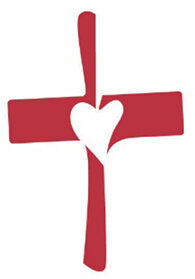What Next? Moving Toward Easter
Since the peaceful protests and racial riots in June the concern for those who suffer from racism continues to grow. This Lenten Season we have explored realities, and contemplated the sin of racism in our world, in our community, in the past and in the present, and even in our own hearts.
Lent for us has been like Jesus in the desert, a time of mental and spiritual preparation. As Jesus emerges from the desert, and we emerge from Lent, it is important to remember our time of exploration and contemplation changes us from the inside out. Just like Jesus was strengthened by His fasting in the desert, so too are we strengthened in our commitment to love our neighbors. After the desert, Jesus went out and ministered for years to those who were on the margins of life. Jesus healed the sick and touched the lepers. His work of loving every person both became both the model of how we are called to live our lives, and it was threatening to those in power. In the end love did not win, or did it? Jesus’ death was never the end; we are an Easter people.
As we enter into the Easter season, we are called upon to reflect on all that we have gained in our Lenten experiences, how our hearts were changed, and what Jesus calls us to do for our neighbor.
During the Easter season we will be offering opportunities to contemplate further and to begin to identify what can “I” do. Remember the disciples after Jesus ascends into heaven? At first they locked themselves in a room, but through prayer and the Holy Spirit they were strengthened to go out and share the Good News! So what is your next step on this journey?
Three ways to continue your journey:
Our local AMOS group will be offering “House Meetings” to begin to explore the question of what do we do now, the hope is that this conversation can inspire individual and group action.
Several of our Peace and Justice committee members are ready to delve deeper into study with those are ready , and desire to learn more. Books studies will be offered
Finally, we will be providing you with several resources and local groups that would welcome you in taking the next step that is right for you.


















